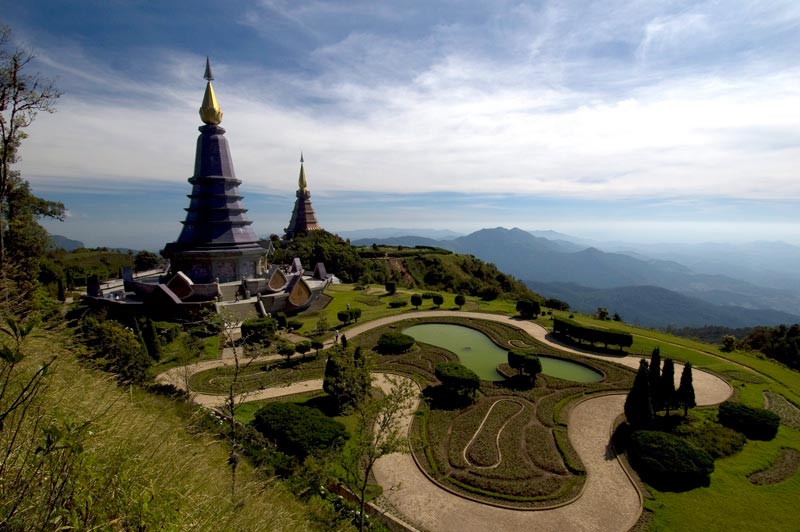Chiang Mai has its own very distinctive culture, arts, festivals, and traditions as well as an exciting mix of local, ethnic as well as expatriate communities from all over the world. It has been voted one of the top destinations to live in Asia and is a modern and cosmopolitan city, while not having lost its traditional old charm. more..
1. Chiang Mai Walking Street
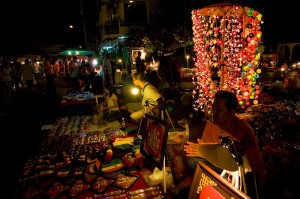 Unlike in the Night Market, there’s hardly anything resembling designer rip-offs, although the fake Rolexes as popularised by Madonna make an occasional appearance. The street is home to a number of temples, all of which turn into outdoor food courts for the night, giving a plethora of opportunities to try authentic Lanna foods at incredibly low prices. This pedestrianised walking street attracts Thais as well as tourists and is growing larger by year due to its popularity, street musicians, traditional puppeteers and huge numbers of goods on show at the stalls. Rachadamnoen Street is lined with coffee shops and bars, with people-watching a favourite occupation. Thai dancing shows are often performed in the tiny squares and temple grounds. Arriving before it gets dark gives the chance of a visit to Wat Chedi Luang, set half-way down the street, once home in the 15th century to Thailand’s famed Jade Buddha and still home to the ancient Pillar of the City legendarily charged with keeping the town safe from invaders.
Unlike in the Night Market, there’s hardly anything resembling designer rip-offs, although the fake Rolexes as popularised by Madonna make an occasional appearance. The street is home to a number of temples, all of which turn into outdoor food courts for the night, giving a plethora of opportunities to try authentic Lanna foods at incredibly low prices. This pedestrianised walking street attracts Thais as well as tourists and is growing larger by year due to its popularity, street musicians, traditional puppeteers and huge numbers of goods on show at the stalls. Rachadamnoen Street is lined with coffee shops and bars, with people-watching a favourite occupation. Thai dancing shows are often performed in the tiny squares and temple grounds. Arriving before it gets dark gives the chance of a visit to Wat Chedi Luang, set half-way down the street, once home in the 15th century to Thailand’s famed Jade Buddha and still home to the ancient Pillar of the City legendarily charged with keeping the town safe from invaders.
2. Chiang Mai Temples
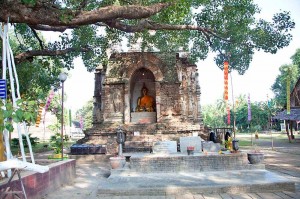 Wat Chiang Mun
Wat Chiang Mun
Wat Chiang Mun is situated within the city walls on Rajpakinai Road on the north side of Chiang Mai city. This temple is one of the most historically significant in Chiang Mai, due to it being the first Royal temple constructed within the city grounds in 1296 by King Mengrai. Although the temple has been restored in recent times, you can still see the old foundations and walls from that bygone period in time. At Wat Chiang Mun, you will find a tiny enshrined crystal Buddha named Pra Seh-Taang Kamaneeee.
Wat Phra Singh
Wat Phra Singh is translated as “The Temple of the Lion Buddha.” Constructed in 1345 by King Pha Yu to hold the ashes of his father, King Kham Fu, housing 2 medieval Buddhist images. The temple is one of the most important Buddhist monasteries in this part of the world. Believed to be the first monastery to hold the Emerald Buddha, which was then moved to Wat Chedi Luang and now rests in Bangkok at Wat Phra Kaew, this temple is extremely sacred. When visiting this Chiang Mai temple, you will more than likely be approached by one or more of the 700 monks who live here, so they can brush up on their English. They are very friendly.
3. Doi Suthep Temple
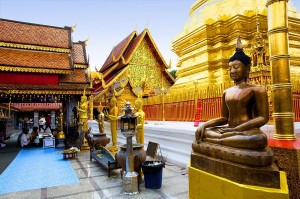 Doi Suthep with its famous temple and Royal Palace is Chiang Mai’s sacred mountain; a place of pilgrimage for tens of thousands of Buddhists on the high holy day of Visakha Bucha in early summer. It’s also a tourist magnet, both for the spectacular Wat Prathat Doi Suthep with its glorious golden chedi holding a relic of the Buddha and for the spectacular views over the city and Doi Suthep National Park. A comfortable walk or short songthaew ride away are lovely Bhuping Royal Palace Gardens.
Doi Suthep with its famous temple and Royal Palace is Chiang Mai’s sacred mountain; a place of pilgrimage for tens of thousands of Buddhists on the high holy day of Visakha Bucha in early summer. It’s also a tourist magnet, both for the spectacular Wat Prathat Doi Suthep with its glorious golden chedi holding a relic of the Buddha and for the spectacular views over the city and Doi Suthep National Park. A comfortable walk or short songthaew ride away are lovely Bhuping Royal Palace Gardens.
4. Muang On Cave in Chiang Mai
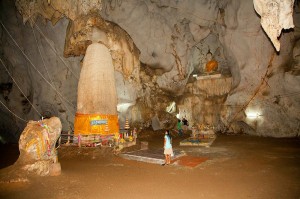 Located in Mae Sot just a short drive from San Kamphaeng Hot Springs and 30km from the northern city of Chiang Mai, the Muang On Cave is a place of legends, Buddhist and animistic traditions and spectacular natural formations.
Located in Mae Sot just a short drive from San Kamphaeng Hot Springs and 30km from the northern city of Chiang Mai, the Muang On Cave is a place of legends, Buddhist and animistic traditions and spectacular natural formations.
Little-known except to local people, it’s far less crowded than many of Chiang Mai’s other attractions and gives a rare glimpse into the unique culture of the former Lanna Kingdom.
5. Chiang Mai Sudaluck Wood Carving
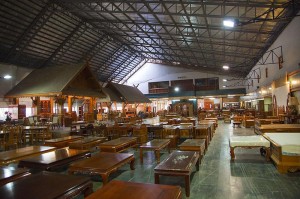 There is nothing better to decorate your house than with high quality and handmade arts and crafts. They add that special ambience to a property and in some cases provide that finishing touch. Chiang Mai Sudaluck is the finest establishment for hand-carved furniture and accessories in and around the city.
There is nothing better to decorate your house than with high quality and handmade arts and crafts. They add that special ambience to a property and in some cases provide that finishing touch. Chiang Mai Sudaluck is the finest establishment for hand-carved furniture and accessories in and around the city.
This traditional Thai company benefits from expertise handed down from generation to generation over the course of centuries, creating artistic masterpieces and furniture from teak and rose wood. Every single item is a unique work of art hand carved and meticulously designed to add a touch of class to your home.
The shop houses over 400 unique furniture products in stock which you can peruse at your own time and pace. Teak and Rosewood are two of the finest woods in the world for carving.
6. P Collection Silverware Manufactures
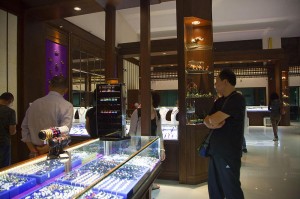 Visiting Chiang Mai and not basking in its vast arts and craft culture is like going to Rome and not visiting the Coliseum. The P.Collection factory specializes in manufacturing and exporting Sterling Silver products and gold and silver jewelry. This pristine production house is chicly designed with glass-encased treats at every turn. All the items are produced and developed in the factory shop positioned beside the showroom. This allows you the great opportunity of watching these highly skilled craftsmen at work polishing and engraving stones with a deft and delicate touch only an expert could muster.
Visiting Chiang Mai and not basking in its vast arts and craft culture is like going to Rome and not visiting the Coliseum. The P.Collection factory specializes in manufacturing and exporting Sterling Silver products and gold and silver jewelry. This pristine production house is chicly designed with glass-encased treats at every turn. All the items are produced and developed in the factory shop positioned beside the showroom. This allows you the great opportunity of watching these highly skilled craftsmen at work polishing and engraving stones with a deft and delicate touch only an expert could muster.
7. Doi Pui Hmong Village
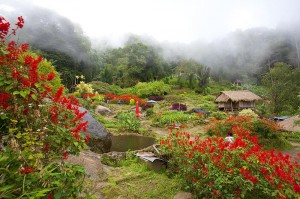 Doi Pui Village is home to members of the Hmong hill tribe, and is set on the far heights of Doi Suthep Mountain in Doi Suthep National Park. It’s a popular spot for tourist visits, but not all the villagers are involved in the Chiang Mai tourist trade, with some still farming the land using traditional methods and others providing the necessities for village life. Most of the younger Hmong work in Chiang Mai, with their wages helping to fund modern amenities such as electricity and televisions.
Doi Pui Village is home to members of the Hmong hill tribe, and is set on the far heights of Doi Suthep Mountain in Doi Suthep National Park. It’s a popular spot for tourist visits, but not all the villagers are involved in the Chiang Mai tourist trade, with some still farming the land using traditional methods and others providing the necessities for village life. Most of the younger Hmong work in Chiang Mai, with their wages helping to fund modern amenities such as electricity and televisions.
8. Baan Tawai Village
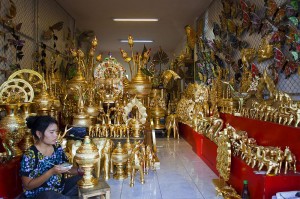 Baan Tawai is the village of wood-carving handicrafts. It has long been known as the major cultural attraction of Chiang Mai for Thai and foreign tourists. The best quality and bargain wood carving items can be found in Baan Tawai. At present, a wide variety of wood carvings and other decorative items e.g. wood carving, wood-strips, gold leaf wood, wood-strips, gold leaf wood, antique wood, silverware, lacquer ware, hand-woven textile, basketry and earthenware, can be found in the Baan Tawai Handicraft Center and Baan Tawai Song Fang KlongCenter.At the end of January each year, Baan Tawai celebrates wood carving with a week-long fair.
Baan Tawai is the village of wood-carving handicrafts. It has long been known as the major cultural attraction of Chiang Mai for Thai and foreign tourists. The best quality and bargain wood carving items can be found in Baan Tawai. At present, a wide variety of wood carvings and other decorative items e.g. wood carving, wood-strips, gold leaf wood, wood-strips, gold leaf wood, antique wood, silverware, lacquer ware, hand-woven textile, basketry and earthenware, can be found in the Baan Tawai Handicraft Center and Baan Tawai Song Fang KlongCenter.At the end of January each year, Baan Tawai celebrates wood carving with a week-long fair.
9. Sankhampang Hot Springs
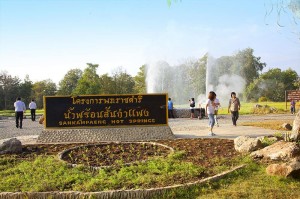 Located some 35km from Chiang Mai City, the Sankamphaeng Hot Springs may come as a surprise to those who don’t realise that Chiang Mai Province sits along a fortunately mostly inactive volcanic fault line. Located in a pretty landscaped park surrounded by agricultural land, the hot springs have been recently smartened up, but are not yet the equivalent of a western-style spa. The notice at the entrance stresses that the baths are intended for Thai families and advises westerners not to expect too much.
Located some 35km from Chiang Mai City, the Sankamphaeng Hot Springs may come as a surprise to those who don’t realise that Chiang Mai Province sits along a fortunately mostly inactive volcanic fault line. Located in a pretty landscaped park surrounded by agricultural land, the hot springs have been recently smartened up, but are not yet the equivalent of a western-style spa. The notice at the entrance stresses that the baths are intended for Thai families and advises westerners not to expect too much.
10. Chiang Mai Doi Inthanon Day Trip
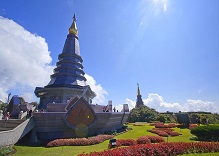 Chiang Mai is famous for its abundant natural beauty and when you visit the city’s surrounding regions, you will be overwhelmed. You simply cannot visit Chiang Mai without taking a trip out to Thailand’s largest mountain, Doi Inthanon, which is 2,565m (8,415 ft) above sea level. The journey from Chiang Mai City Center is roughly 60km southwest, which means it takes less than an hour to reach the front gates of Doi Inthanon National Park. The admission fee to Doi Inthanon National Park is 400baht for adults and 200baht for children.
Chiang Mai is famous for its abundant natural beauty and when you visit the city’s surrounding regions, you will be overwhelmed. You simply cannot visit Chiang Mai without taking a trip out to Thailand’s largest mountain, Doi Inthanon, which is 2,565m (8,415 ft) above sea level. The journey from Chiang Mai City Center is roughly 60km southwest, which means it takes less than an hour to reach the front gates of Doi Inthanon National Park. The admission fee to Doi Inthanon National Park is 400baht for adults and 200baht for children.
There are many things to see and do within the national park with 3 waterfalls, caves, hill-tribe village markets, temples, horticultural centers and last but not least, the summit of Doi Inthanon. The beauty is simply breathtaking.
11. Chiang Mai Monkey Centre
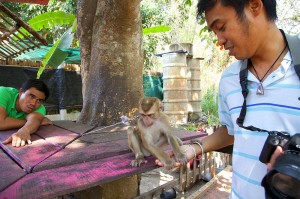 Every hour, you can enjoy monkey shows, which are a great experience where some audience-monkey interaction takes place. The monkeys display an amazing range of tricks that will keep you on the edge of your seats. See them playing basketball, bike-riding, coconut picking and calculating arithmetic. The main emphasis at the Chiang Mai Monkey Center is fun and a place to learn more about our intelligent cousins. All the monkeys at the center were not taken from the wild; they were either rescued or given to them from zoos that were overflowing with animals.
Every hour, you can enjoy monkey shows, which are a great experience where some audience-monkey interaction takes place. The monkeys display an amazing range of tricks that will keep you on the edge of your seats. See them playing basketball, bike-riding, coconut picking and calculating arithmetic. The main emphasis at the Chiang Mai Monkey Center is fun and a place to learn more about our intelligent cousins. All the monkeys at the center were not taken from the wild; they were either rescued or given to them from zoos that were overflowing with animals.
12. Chiang Mai Zoo
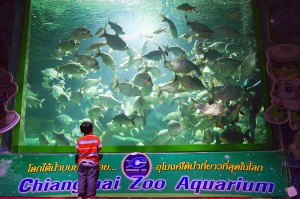 So many zoos in Thailand never live up to their expectations. Chiang Mai Zoo on the other hand is a completely different ballgame. First established in 1974, the zoo has become famous for being home to two pandas, ‘Chuang Chuang’ and ‘Lin Hui’, loaned from the Chinese government.
So many zoos in Thailand never live up to their expectations. Chiang Mai Zoo on the other hand is a completely different ballgame. First established in 1974, the zoo has become famous for being home to two pandas, ‘Chuang Chuang’ and ‘Lin Hui’, loaned from the Chinese government.
The two pandas became national and international news when they gave birth to a baby Giant Panda, named Lin Bing, which caused quite a lot of news activity across Thailand because of the surprise and the rareness of baby pandas. Although Chiang Mai Zoo has become famous for this reason, and you can also see the three Giant Pandas up close and personal for a 100 baht charge, the zoo is also one of Thailand’s finest.
13. Traditional Khantoke Dinner and Show
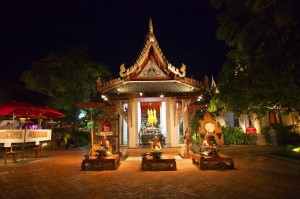 This traditional dinner and show became a social gathering in 1953, bonding together the best of the region’s cuisine, cultural and traditional dance shows. These elements complement each other in such a compulsive way that you must enjoy this experience when visiting Chiang Mai.
This traditional dinner and show became a social gathering in 1953, bonding together the best of the region’s cuisine, cultural and traditional dance shows. These elements complement each other in such a compulsive way that you must enjoy this experience when visiting Chiang Mai.
As a party of 5 friends, we were recommended to visit the Old Chiang Mai Cultural Center for the Khantoke Dinner and Show, which was one of our most memorable Chiang Mai experiences.
When first stepping foot in the venue, we were overwhelmed with the deep red carpets everywhere. The Khantoke Dinner is mainly a seat on the floor event, although the venue does also cater for those who want a standard table and chairs affair. We sat down crossed legged at our table to experience the meal as intended – on the floor.
14. Borsang Fishing Park Chiang Mai
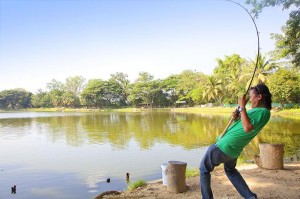 Situated within a short drive from the world-famous Borsang Umbrella Village, this fishing park is roughly a 30-minute drive from the heart of Chiang Mai City. If you have come to Chiang Mai without your fishing tackle, Borsang Fishing Park is perfect for you because you can rent reels, rods and bait onsite for just 200 baht, alongside the 100 baht entry fee to the park. The size of the lake is approximately 6 acres, and is home to famous Northern Thai fish such as the Mekong Giant Catfish and the Striped Catfish although you will also find some Chinese Carp. Some of the Catfish can be up to 50kg in weight although on average there are lots weighing in between 20-30kg. It is not unheard for keen anglers to catch 20 Catfish in a day, with an average size of around 15kg.
Situated within a short drive from the world-famous Borsang Umbrella Village, this fishing park is roughly a 30-minute drive from the heart of Chiang Mai City. If you have come to Chiang Mai without your fishing tackle, Borsang Fishing Park is perfect for you because you can rent reels, rods and bait onsite for just 200 baht, alongside the 100 baht entry fee to the park. The size of the lake is approximately 6 acres, and is home to famous Northern Thai fish such as the Mekong Giant Catfish and the Striped Catfish although you will also find some Chinese Carp. Some of the Catfish can be up to 50kg in weight although on average there are lots weighing in between 20-30kg. It is not unheard for keen anglers to catch 20 Catfish in a day, with an average size of around 15kg.
15. X-Center in Chiang Mai
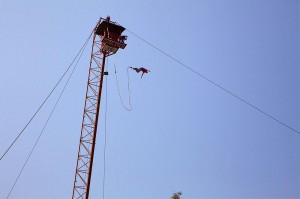 Adrenalin junkies visiting Chiang Mai should stop right in their tracks and listen up. The X-Center at Chiang Mai is one of those places that thrill seekers will fall in love with on their first impression. This one-stop-shop of adventure activities has everything all under one roof. Choose from an impressive selection of adventure activities at this purpose-built venue:
Adrenalin junkies visiting Chiang Mai should stop right in their tracks and listen up. The X-Center at Chiang Mai is one of those places that thrill seekers will fall in love with on their first impression. This one-stop-shop of adventure activities has everything all under one roof. Choose from an impressive selection of adventure activities at this purpose-built venue:
– Jungle Bungy Jump
– Xorb Ball
– Off Road Buggies
– Drift Go-Karts
– Trial Bikes
– Paint Ball
Situated on Mae Rim-Samoeng Road, under a 10-minute drive from Chiang Mai city center, the X-Center is located on your left hand side – you simply cannot miss it. When we arrived at the X-Center, we were immediately blown away by the set-up. You are first greeted by a large car park, restaurant and main office, behind which you will see a lake, bungy crane and a custom-built covered go-kart track. Everything gleams of newness.
16. Bo Sang Umbrella Village in Chiang Mai
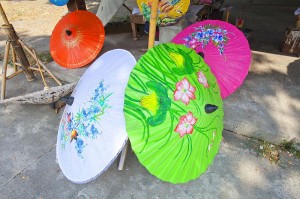 Chiang Mai is not only famous for its arts and crafts, but also for its unique items that cannot be purchased anywhere else. Chiang Mai’s umbrella production tradition goes back over 200 years. Bo Sang Umbrella Village in Chiang Mai reflects the true essence of this unique craft, using age-old methods to produce the most colourful and aesthetically pleasing umbrellas imaginable. The beautiful handcrafted parasols are made from silk, bamboo, rice and saa paper. Chiang Mai is actually home to an annual 3-day umbrella festival in the 3rd week of January. This colourful festival personifies Chiang Mai’s prestigious cultural reputation. It features exhibitions, contests, a Miss Bo Sang pageant, sizzling snacks, and, of course, a large number of umbrellas for sale. A colourful daytime umbrella procession and is followed by a night-time lantern procession. The festival is a highlight of the local calendar, with live northernThai music performed along Bo Sang’s main street.
Chiang Mai is not only famous for its arts and crafts, but also for its unique items that cannot be purchased anywhere else. Chiang Mai’s umbrella production tradition goes back over 200 years. Bo Sang Umbrella Village in Chiang Mai reflects the true essence of this unique craft, using age-old methods to produce the most colourful and aesthetically pleasing umbrellas imaginable. The beautiful handcrafted parasols are made from silk, bamboo, rice and saa paper. Chiang Mai is actually home to an annual 3-day umbrella festival in the 3rd week of January. This colourful festival personifies Chiang Mai’s prestigious cultural reputation. It features exhibitions, contests, a Miss Bo Sang pageant, sizzling snacks, and, of course, a large number of umbrellas for sale. A colourful daytime umbrella procession and is followed by a night-time lantern procession. The festival is a highlight of the local calendar, with live northernThai music performed along Bo Sang’s main street.
17. Mae Rim Hill Tribe Village in Chiang Mai
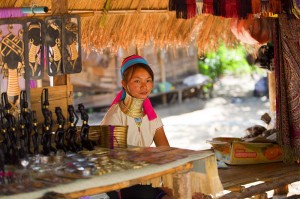 Thailand’s hill tribe villages have become one of the country’s leading tourist attractions spanning the northwest of Thailand in places such as Chiang Mai and Chiang Rai, which in comparison to beachside destinations such as Phuket and Koh Samui are a more authentic slice of real Thailand.
Thailand’s hill tribe villages have become one of the country’s leading tourist attractions spanning the northwest of Thailand in places such as Chiang Mai and Chiang Rai, which in comparison to beachside destinations such as Phuket and Koh Samui are a more authentic slice of real Thailand.
It’s easy for visitors to the Mae Rim Hilltribe Village in Chiang Mai to feel sorry for these people that live in the jungle, who have lived there for generations, but sometimes you have to wonder if their way of living is more in line with nature and polar opposites of our material trappings and consumerism mentality.
They all seemed extremely happy, classy and with a more humane attitude towards life than I could ever muster. The village is open to all for a 500 baht fee, giving you the opportunity to roam throughout the wooden hut village and observe the villagers going through their daily life routines, weaving fabrics and crafting handmade items for sale. Photo opportunities are aplenty, which really captures the atmosphere of this unique experience.

